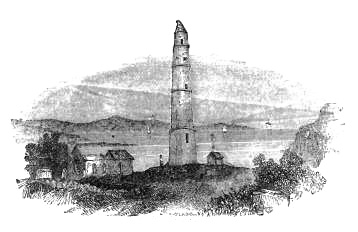Social Life in Ancient Ireland

Ardmore Round Tower
Social Life previous to the English Invasion—Domestic Habitations—Forts—Granard and Staigue—Crannoges and Log-houses—Interior of the Houses—The Hall—Food and Cooking Utensils—Regulations about Food—The Kind of Food used—Animal Food—Fish—Game—Drink and Drinking Vessels—Whisky—Heath Beer—Mead—Animal Produce—Butter and Cheese—Fire—Candles—Occupations and amusements—Chess—Music—Dress—Silk—Linen—Ancient Woollen Garments—Gold Ornaments—Trade—General Description of the Fauna and Flora of the Country.

USTOMS which illustrate the social life of our ancestors, are scarcely the least interesting or important elements of history. Before we enter upon that portion of our annals which commences with the English invasion, under the auspices of Henry II., we shall give a brief account of the habitations, manners, customs, dress, food, and amusements of the people of Ireland. Happily there is abundant and authentic information on this subject, though we may be obliged to delve beneath the tertiary deposits of historical strata in order to obtain all that is required. English society and English social life were more or less influenced by Ireland from the fifth to the twelfth century. The monks who had emigrated to "Saxon land" were men of considerable intellectual culture, and, as such, had a preponderating influence, creditable alike to themselves and to those who bowed to its sway. From the twelfth to the sixteenth century, English manners and customs were introduced in Ireland within the Pale. The object of the present chapter is to show the social state of the country before the English invasion—a condition of society which continued for some centuries later in the western and southern parts of the island.
